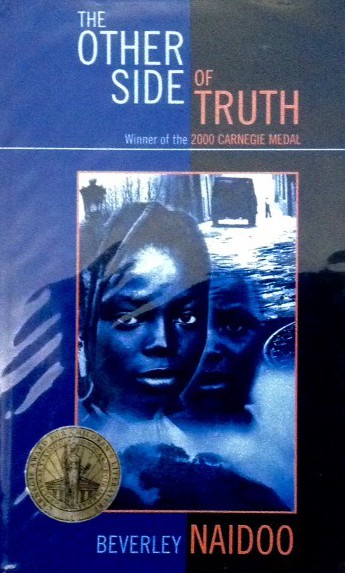Inspiring Young Readers
 posted on 11 Dec 2015
posted on 11 Dec 2015
The Other Side of Truth by Beverley Naidoo
This award winning book is currently used in Year Six with ten year old children and apparently, some teachers and parents find the content rather controversial for this age group. This is despite the fact that the two protagonists, Sade, a twelve year old girl, and her ten year old brother, Femi are living lives as unaccompanied asylum seekers – a reality that some children will recognise from personal experience. The writer, Beverley Naidoo believes that all children’s books are political, whatever their subject, and as such she sets out to educate her readers about social injustice using her own personal experiences and her continuing interest in and activism against oppressive regimes throughout the world.
Growing up in South Africa, Naidoo became involved in resistance to Apartheid and eventually fled to England for safety. Her first hugely successful children’s book, Journey to Jo’burg , introduced young readers to the subject of Apartheid and was banned in her home country until 1991. She continued to write widely acclaimed books exploring young people’s lives under very difficult circumstances.
Set against the real anti -government protests in Nigeria, where the writer Ken Saro-Wiwa was executed with eight others in 1995, The Other Side of Truth begins on page one with Sade and Femi witnessing their mother’s bloody murder by government soldiers. Naidoo does not patronise her young readers and expects them to be as shocked and distressed as the child characters from the outset. In this way they are drawn into the disbelief and grief that the two children feel as they struggle to make sense of how their lives are going to change. This is the most violent part of the story out of the way, what follows is sometimes painful and distressing but slowly moves us forward through the stages of grief to a form of resolution. But, I don’t want to dwell on these parts because I want to convince you to read it as an affirmative and reflective novel that focuses on many examples of kindness and humanity despite the bleak subject.
The central theme of truth versus lies as signalled by the title is woven throughout. Sade and Femi have been brought up to value truth by their father who is a political writer opposed to the government who states: ’The truth is the truth. How can I write what is untrue?' and her mother, whose wise words both haunt and reassure her: ‘Truth. Keeps the hands cleaner than soap’.
After the murder and a subsequent threat to the family, their father and extended family make the heartbreaking decision to quickly smuggle the children out of Nigeria to a place of safety with their uncle who lives in London. This means that they have to pretend to be the children of the untrustworthy Mrs Bankole who is paid to take them by plane and then by train and deliver them to their uncle. And so they begin to learn to lie in order to stay safe and are party to many more lies, bribery and corruption as they travel.
When they are eventually abandoned by this very unpleasant woman and her husband at Victoria station, they are pitched into the frightening unfamiliar world of London where they meet more horrible adults who either ignore or threaten them. I am not going to tell you all the details of their adventures but when they are eventually taken into police custody, Sade takes some comfort by persisting with half lies about their identity – she gives her mother’s maiden name in order to protect their father back in Nigeria. As the story plays out, she shows us that she is able to use versions of the truth and to reflect on the difference between ‘good secrets and bad secrets’ to retain some dignity when she begins at a new school and is bullied. When their father tracks them down after six weeks, he too has had to compromise his love of the truth in order to seek asylum in England by travelling on a false passport.
We learn a lot about the asylum process, other terrible refugee stories, the difficulty of settling with foster families and learning the strange customs of unfamiliar places. The experience of school is very negative at first but eventually becomes a place where people can be trusted. We meet plenty of kind adults in this story to contrast with the brutality of the soldiers, police and politicians in Nigeria and the harsh indifference of those that the children meet when they first arrive in London. By the end of the story, Sade has grown into a young woman with passionate conviction and resilience that leads her to do something very brave and special.
This is a powerful complex novel about the enduring strength of family and community, values and humanity. Most importantly, it is written with verve and skill that bring the characters alive and Naidoo paints the physical and emotional landscapes so vividly. If you haven’t had the pleasure of reading it yet – I strongly recommend it. If you have read it – then read it again because you will discover new things.
Karen Argent
11th December 2015